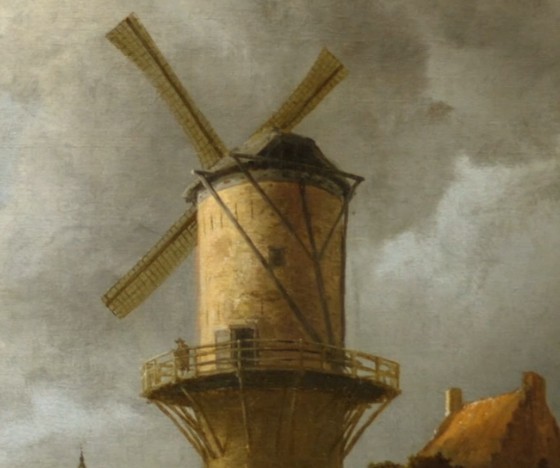What happened was what always happens in such calamities -
在这样的人为灾难中 该发生的总会发生
a frantic, mass migration of refugees.
惊慌失措的难民大量的迁移
The Netherlands became split
荷兰沿着战线
along the lines of the military slog -
一分为二
Protestant north, Catholic south.
新教徒在北 天主教徒在南
But, as so often in our story,
但人类历史中总不乏这样一幕
the most astonishing flowerings
最令人艳羡的花朵
happen in the midst of human disaster.
总是在苦难中悄然开放
In the Protestant Dutch Republic,
在新教徒的荷兰共和国中
as art was purged from churches branded as idolatry,
艺术被打上了崇拜邪教的标签而被清出教堂
it simply shifted location into other places,
却只是换了地方暗自生长
especially private homes.
尤其是在私人家中
In the years when they were most beleaguered by war,
在战火烧得最凶的那几年
the Dutch became most prolific at buying pictures
荷兰人非常热衷于购买画作

which reminded them of what they were defending.
让画作提醒自己所守卫的土地
It was the first mass-market for landscape art,
这是风景画第一次有了大众市场
precisely the kind of low art which Italians condescended to.
准确的说 是意大利人看不上的低俗艺术品
Willow-hung streams.
柳枝低垂的小溪
The life of the rustics.
乡下人的生活
It was what the Dutch were most passionately attached to.
这正是荷兰人心中最牵动心弦的所在
The simple face of their homeland.
这是家乡简朴的脸庞
Now, the reason why the Dutch felt so emotionally invested
荷兰人之所以对这种风景投入了如此多的感情
in this landscape was because they had been responsible
是因为为了让这片土地呈现如今的景致
for physically making so much of it.
他们付出了相当多的努力
There's this old saying that God made the world,
有句老话说 上帝创造了世界
but the Dutch made Holland.
而荷兰人创造了荷兰
And exactly at the time where they reinvent landscape painting,
而就在他们重新发明了风景画的那段时间里
this was literally true.
这句老话说的一点没错
This was an area called the Beemster.
这个区名叫贝姆斯特尔
200,000 acres of what had been the inland sea of the Zuiderzee
1607至1612年间 八百平方公里土地
were turned into this glorious pasture between 1607 and 1612,
从曾经的内海须德海 变做了繁茂的牧场
while the Dutch were at war.
此时荷兰尚处于战争期间
It was reclaimed with the aid of 43 windmills,
当时全靠这四十三座风车磨坊
pumping the water out.
排水造陆
This wasn't just topography, wasn't just land,
这不只是地貌 不只是土地
it was their homeland.
这是他们的家园












